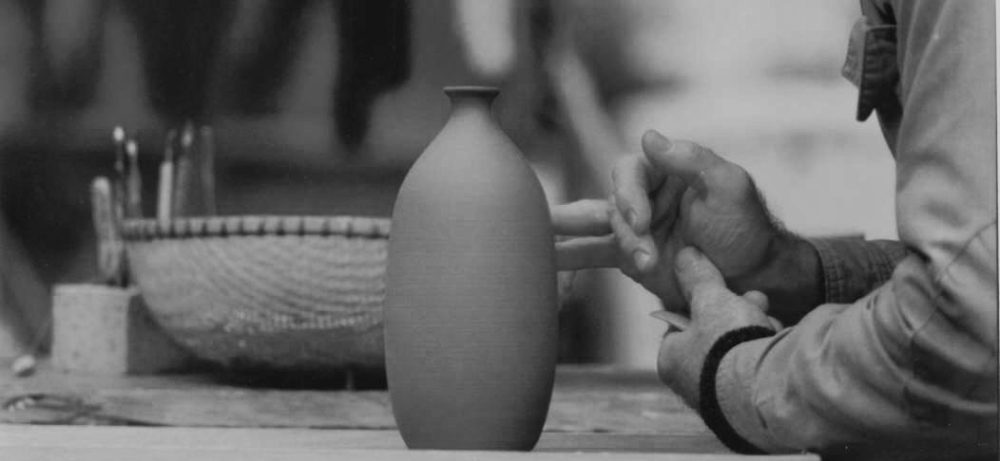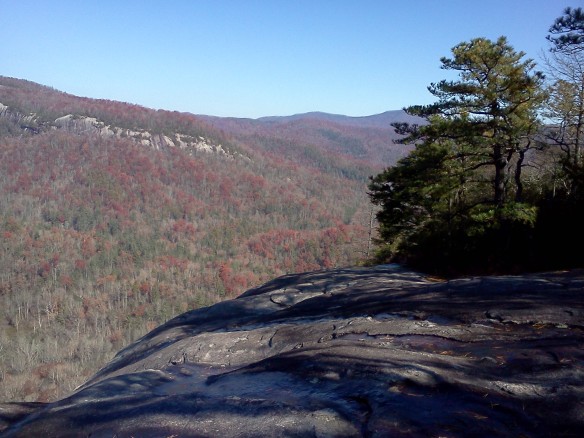In the years BJ and I lived among the Appalachian Mountains, we hiked stunning trails in Tennessee, Virginia, and North Carolina. We lovingly remember one particular trek in North Carolina’s Land of Waterfalls.
After a day of warming up on a trail along the river by the hotel, we decided to go deeper into the Pisgah National Forest and explore a bit higher. Stopping in at a park visitor center, we met a Scottish Ranger. We probably asked more questions than required, as it was delightful to hear his rhythmic responses. We outlined what we desired to do; hike a trail of medium difficulty for approximately two to three hours. He quickly responded by unfolding a park map and pointing to the trail he believed would fit our preferences. We thanked him, followed his directions, and arrived at the base of the trail. We cinched up hiking boots over hiking socks, retrieved our hiking staffs, and I pulled on the backpack loaded for our medium difficulty and distance hike.
Upward
We have hiked many beautiful trails, and the one in the Land of Waterfalls was no exception. About two hours into the hike we were still climbing, even with the realization that this was going to be a long one, we still found ourselves appreciative of trees, rhododendron, and the skillfully maintained trail; extremely steep sections made more navigable by carefully placed stones harvested from the bounty of the Mountain.
When I graduated from the University, as best I can remember, I think I expected the trail of life ahead would be a relative steady, upward climb. For a time, it was. I know individuals who have climbed their path with such straight, conscious focus, or so that’s how I perceived their ascent. But for me, there were a lot of side-paths, diversions where I was maybe trying to “find myself” (one of those phrases once spoken often by those in my generation).
On my upward trek in life and living, I wish I had been so present and conscious of the beauty surrounding me all along. Even in the lack of due-diligent presence, I’ve still found myself tremendously blessed by the relationships made and maintained along the way.
I’m here to tell you, in spite of the diversions, that the trek upward went way too fast; a speed that breaks my heart. As Parker J. Palmer asks, “Is my heart broken apart or broken open?” I pray continually that it is open.
The Trust View (At the Summit)
For so long it seems, I looked expectantly forward to getting to the top of the hill, to be filled with experience and wisdom, proud of what was back down that climb of life and living. Certainly I breached the crest with experience, and yes, a certain cache of wisdom, but there wasn’t time to peer back without the temptation to walk back the same way, something that in loving reality was not possible for me.
Certainly I was free to make the choice of which way to descend. Or was I? I’m not sure going back the way one came is necessarily the best way to go home. Or maybe it’s just that trying to go back the same way is not possible due to our own false expectations. Expectations tied to anything other than our own Trueness cause us to want a reality that once was, or anything but what it is in the moment. If we are actually paying attention once at the summit of something, we see the way up with new eyes, and clearly see other possibilities from there. It is such presence at the peak that I call “The Trust View.” It is a place you go, real or metaphorically, to know the balance of all experience.
Our hiking in the Appalachian Mountains taught me something of great value: When you get to the Summit, stop and look. When we reached the top that day, we were enthralled by the beauty of the heights. We could look back down to where we had parked, buildings barely identifiable, and cars looking like frozen ants. To stop and rest in such a view, observation and participation meet and swirl together, creating the joy of experience, a holding together of what has been and what is about to be. At such summit we pause and consciously open to all that can be seen. Without words we find encouragement for the poetry of the journey to continue.
The trust view is a metaphor to balance ascent and descent.
Downward
“Over the hill,” another term once frequently spoken in my generation’s younger years. It was often heard as, “Don’t trust anyone over thirty.” In general, I didn’t say or think such, or maybe my reality was the challenge of trusting anyone between age thirty and sixty-five.
Growing up, I was fortunate to spend a lot of quality time with grandparents. Even though they are long gone from this earth, their influence stays with me as I continue on the trail of life and living. The gift of time with them was made possible by two parents over thirty. Well anyway, I’m now over the hill according to those old standards, and quite so as I’m almost at that sixty-five limit. But what does this mean?
I’m not certain what all it means, but one thing I know, that it is important to walk steadily with a good hiking staff. In the reality of walking a mountain path, the hiking staff is a smart option for support and security over the hill, allowing other body members to absorb the pounding of the steps downward. Metaphorically, the trek down the hill of life and living requires that I remain consistently conscious of, and dedicated to, the support I need to steady the walk.
There’s the need and requirement to focus one’s steps down the path on the other side of the hill. I stumbled plenty on the hike upward. While usually recovering my steps quickly, I also had times in a divot dug deeper by self-pity, but I eventually came out of each one of these times and kept walking. Sometimes my steps resumed as I smiled and looked forward with joy. And sometimes I walked on with a tear stained face.
Going Home
It was more than five hours before we saw the base of that trail again in the Land of Waterfalls. Along the descent, probably still an hour to the base, a young couple passed on their way up; they had obviously begun their hike from the other end. As we greeted each other, the woman said, “We’re almost to the top, right?” Without breaking careful downward stride I said, “Whatever you need to tell yourself.” Behind us we heard, “Oh no!”
Once the shock of the distance ahead wore off, I hope that young couple continued on the trail, stopped at the summit, and like us can look back on the day as a beautiful experience. I hope, as they have navigated life and living since that day, that they can see the stones so carefully placed where they needed to be, that their steps will be as carefully placed as they head down, and that they will each see the bounty of the mountain all along the way.
–J. Brunson
Check out my new book, Participation: Falling in Love with Reality
Also available for Kindle


